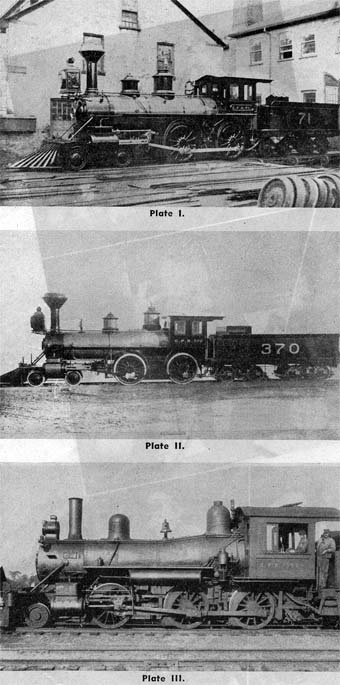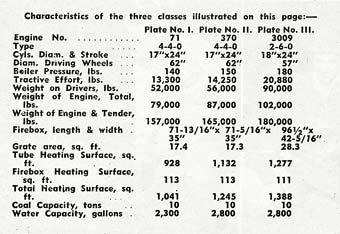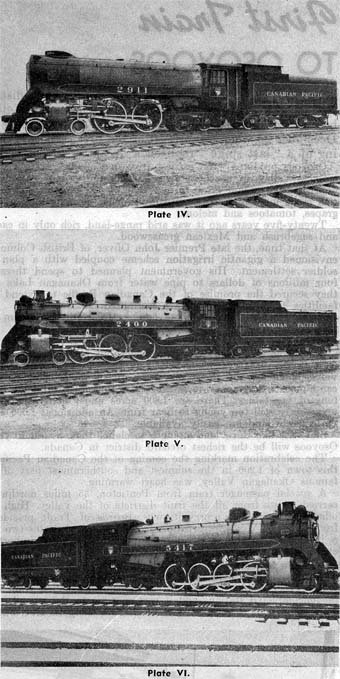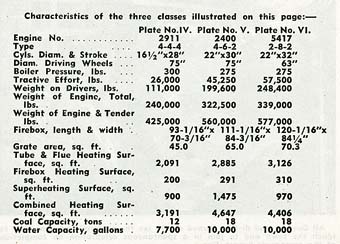
Canadian Pacific Staff Bulletin - June, 1945
By A.E. Mimms
Between business firms, as in personal relationships, there are sometimes developed enduring connections, which carry on through many years on a basis of mutual interest and esteem.
Such is the background behind the service of 425 Kingston-built locomotives on the Canadian Pacific Railway over a period of years extending from the inception of the company to the present.
Before proceeding further we might review briefly the history of the company at Kingston, now the Canadian Locomotive Company Limited, which reaches back into the pioneer days of Canada, when all existing and projected railways in British North America were dependent either upon English or American manufacturers for the construction of their motive power.
Only 25 years after the first locomotive had been successfully operated in England the need of a works in Canada which could construct locomotives for use on the widely spreading network of railway lines became so evident that in 1850, 17 years prior to Confederation, two enterprising citizens of Kingston, Messrs. Morton and Duncan, decided to build and operate such a plant.
In 1854 this plant was acquired by the firm of Morton and Hinds.
In 1865 a company was formed known as the Canadian Engine and Machinery Works to take over the Kingston plant. This was a Montreal corporation headed by R.J. Reekie, as President and Managing Director, G.J. Tandy being plant superintendent.
Another re-organization took place in 1881 when the Canadian Engine and Machinery Company Limited, headed by the Honourable Sir George Kirkpatrick as President, succeeded the Canadian Engine and Machinery Works.
In 1888 the Kingston plant was acquired by a British firm, Dubbs and Company Limited, of Glasgow, and for a few years was operated by them.
The present Canadian Locomotive Company Limited was established in 1900, and this re-organized company has continued operations to the present time.
The first president was the Hon. William Harty, who in 1924, was succeeded by his son, William Harty Jr. In 1932 direction of the company was taken over by William Casey, President and General Manager, who having been connected with the company for many years, has had a wide experience in the field of locomotive construction. Mr. Casey, commencing as an apprentice, held the positions of machinist, foreman, superintendent, works manager, general manager, and president.
By additions to the plant facilities and modernization of the equipment, the plant has been enabled to keep pace with the rapid increase in size and development of locomotives, and is capable of turning out all of the latest types of motive power.
Included in the first locomotive group acquired by the Canadian Pacific Railway in 1881 were six 4-4-0 type engines constructed at Kingston in 1871 for the Grand Trunk Railway. In all, 40 Kingston-built locomotives were acquired by the Canadian Pacific during the first few years of the company's existence, either from the Government, which had used them in preliminary construction preceding the organization of the Canadian Pacific Railway Company, or from various short railways eventually incorporated into the system. Few records are available regarding this early motive power.
Noticeable among them, however, was a locomotive constructed in 1866 which was taken into the company's inventory in 1885 from the St. L&O Railway. Another locomotive obtained the same year was originally Intercolonial Railway Engine number 8, built in 1881. The latest acquisition of Kingston-built locomotives from subsidiary lines occurred in 1931, when two 2-8-0 type locomotives were taken over from the Algoma Eastern Railway.
The first order placed by the Canadian Pacific for new Kingston locomotives in 1882 covered a group of fifteen 4-4-0 type engines, illustrated by Plate I. These locomotives, with their straight topped boilers, centrally-located steam dome and diamond type smoke stacks, were excellent representatives of the locomotive of the day. Peculiar to Canadian Pacific practice was the horned pilot coupler-bracket, brass-ringed front number plate, and brass flag staff at each side of the headlight bracket. It will be noted that these locomotives were fitted with chime whistles, one of the earliest applications of this equipment.
The following year, in 1883, a group of similar engines was ordered.
In 1886 an order placed on Kingston covered a group of ten 4-4-0 type locomotives of heavier construction, as illustrated by Plate II. This particular design was practically standard for a number of years for both freight and passenger service. Similar locomotives were purchased or built by the railway company during the five years following.
The 2-6-0 or Mogul type locomotive, introduced on the system in 1882, was the forerunner of engines of this type designed by the railway company, which were first built at Kingston in 1888, followed by other engines of the same type. A typical example of the Mogul of 1888 is shown by Plate III.
The first 10 wheel 4-6-0 type engines, built at Kingston for the Canadian Pacific were numbers 477 and 478 in 1890. These had 18 x 24 inch cylinders, 57 inch driving wheels, 180 pounds boiler pressure, and developed a tractive effort of 20,880 pounds. The total heating surface was 1,282 square feet, grate area 23.4 square feet, and the locomotive's weight in working order was 105,000 pounds. The 10 wheel type locomotive was rapidly extended for use all over the system.
The first 10 wheel engines of the D10 class to be constructed at Kingston consisted, of a group of 10 engines, numbers 700 to 709, ordered in 1905, which were the forerunners of the class which became ubiquitous on both Eastern and Western Lines, and which finally reached a total of nearly 500 locomotives, of which 68 were built at Kingston.
Fitted with cylinders 21 x 28 inches, boiler pressure 200 pounds, and 63 inch driving wheels, they developed a tractive effort of 33,400 pounds. They were suitable for either freight or light passenger work and light enough to be used on most branch lines. A large number of the D10 class engines are still in service and have performed in a satisfactory manner within the limitations imposed by their capacity.
In freight service a marked advance was introduced in 1898 by the development of heavier Consolidation 2-8-0 type locomotives, some of which were of the cross-compound type.
During 1899 the Canadian Locomotive Company built eight of these engines, equipped with the Pittsburgh System of compounding. These locomotives, having cylinders 21 x 33 x 26 inches, boiler pressure 200 pounds, and 57 inch driving wheels, developed a tractive effort of 26,550 pounds. The following year another group of 10 engines of similar design, but of greater capacity, was ordered from Kingston.
The advent of lightweight passenger cars indicated the advantage of a lightweight passenger locomotive, designed for economical operation at high speed. Such a design was embodied in the development of Jubilee 4-4-4 type engines on the Canadian Pacific, as represented by the 2910-2929 series, Class Fla engines, built at Kingston in 1937 and 1938. When operated with trains consisting of modern lightweight passenger cars, these have demonstrated the possibilities of improved service.
In 1938 there was constructed at Kingston a group of Pacific type locomotives, numbers 2351-2365, Class G3e, which are now used in mainline passenger work. Further orders for G3 class locomotives were placed with the Canadian Locomotive Company in 1940, 1942, 1943, and 1944, the total number purchased being 112 of this class.
(Continued on page 19)
Unfortunately, the article must end here as the remaining page or pages were never saved.
 and is reprinted here with their permission. All photographs,
logos, and trademarks are the property of the Canadian Pacific Railway Company.
and is reprinted here with their permission. All photographs,
logos, and trademarks are the property of the Canadian Pacific Railway Company.



